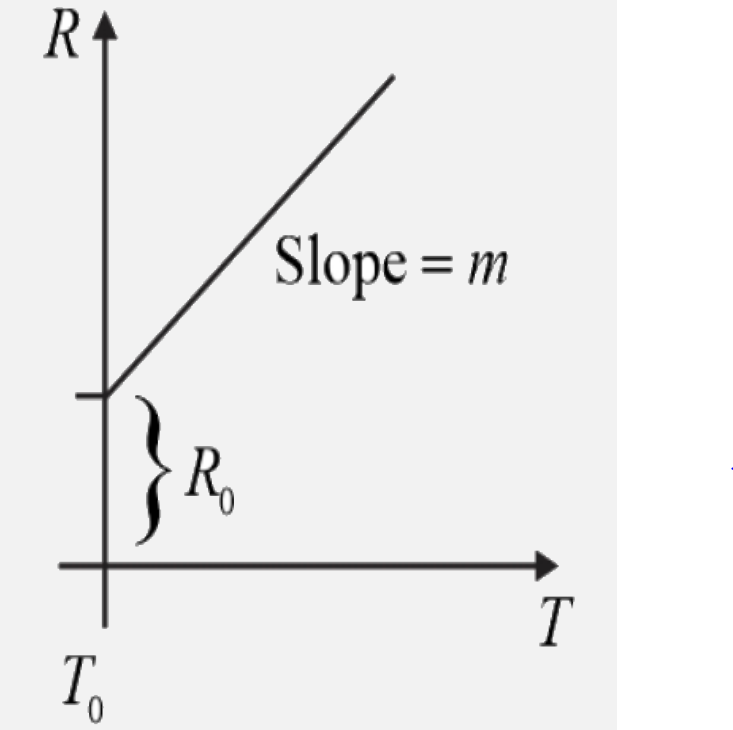The variation of resistance of a metallic conductor with temperature is shown in figure. (i) Calculate the temperature coefficient of resistance from the graph. (ii) State why the resistance of the conductor increases with the rise in temperature.

Video Solution
Text Solution
(i) From graph, corrensponding to point A, let the resistance be R0 and corresponding to point B, the resistance be R. When temperature changes from 0 to θ∘C, the resistance changes from R0 to R .
Thus change in temperature =θ−0=θ∘C
Change in resistance =R−R0
Temperature coefficient of resistnace,
α=change in resistanceoriginal resistance×change in temp.
R−R0R0×θ=OC−OAOA×OE
(ii) With the rise of temperature of conductor, the resistance of a conductor increases because the frequency of collision of electrons with ions/atoms of the conductor increases, resulting decreases in relaxtion time (τ) of electrons.
As R∝1/τ, so R increases as τ decreases.
|
Topper's Solved these Questions
- CURRENT ELECTRICITYBOOK - PRADEEPCHAPTER - CURRENT ELECTRICITYEXERCISE - Conceptual Problems
3 Videos
- CURRENT ELECTRICITYBOOK - PRADEEPCHAPTER - CURRENT ELECTRICITYEXERCISE - Very short Q/A
7 Videos
- COMMUNICATION SYSTEMSBOOK - PRADEEPCHAPTER - COMMUNICATION SYSTEMSEXERCISE - MODEL TEST PAPER-2
9 Videos
- DUAL NATURE OF RADIATION AND MATTERBOOK - PRADEEPCHAPTER - DUAL NATURE OF RADIATION AND MATTEREXERCISE - Exercise
191 Videos
Similar Questions
Knowledge Check
Resistance of a conductor increases with the rise of temperature, because
Arelaxation time decreasesBrelaxation time increasesCcollision between free electron and ions of conductor becomes more frequentDelectron density increasesThe positive temperature coefficient of resistance is for
ACarbonBGermaniumCCopperDAn electrolyteThe temperature coefficient of resistance of a conductor is
APositive alwaysBNegative alwaysCzeroDInfinite
Variation of resistance of the conductor with temperature is shown . Temperature coefficient of the conductor is

View SolutionWhy does the resistivity of metal increase with an increase in temperature ?
View SolutionThe resistance of a metallic conductor increases with temperature due to.
View SolutionThe temperature coefficient of resistance of a semiconductor
View SolutionThe temperature coefficient of resistance of a semi conductor is
View Solution
